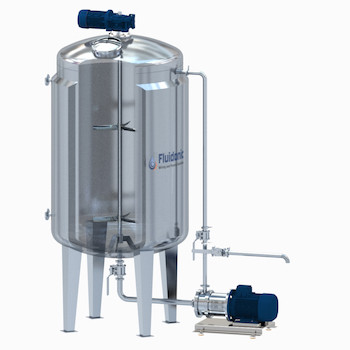-
Uniform Dispersion of Active Ingredients:
-
Homogenization of Formulations:
- Homogenizers are employed to ensure a uniform dispersion of active ingredients, such as pesticides, within the formulation.
- Achieving homogeneity is essential to ensure that each unit of the pesticide product contains a consistent concentration of active substances.
-
Particle Size Reduction:
-
Breaking Down Agglomerates:
- Pesticide formulations may contain solid particles or agglomerates that need to be reduced in size for optimal performance.
- Homogenizers apply mechanical forces to break down these particles, resulting in a finer and more homogeneous mixture.
-
Emulsification of Liquid Formulations:
-
Creating Stable Emulsions:
- In the case of liquid pesticide formulations, homogenizers are used to create stable emulsions.
- Emulsification ensures that oil-based and water-based components are uniformly distributed, enhancing the formulation's stability and efficacy.
-
Enhanced Bioavailability:
-
Improving Absorption and Effectiveness:
- Homogenization aids in improving the bioavailability of active ingredients.
- By reducing particle sizes and ensuring a uniform distribution, homogenizers contribute to better absorption and effectiveness of pesticides when applied in the field.
-
Consistency in Formulations:
-
Maintaining Batch-to-Batch Consistency:
- Homogenizers play a key role in maintaining consistency in pesticide formulations from one production batch to another.
- This consistency is crucial for ensuring that the pesticide product performs predictably and meets regulatory requirements.
-
Stabilization of Suspensions:
-
Preventing Settling and Separation:
- Homogenizers help in stabilizing suspensions by preventing the settling of solid particles.
- This is important for ensuring that the pesticide formulation remains well-dispersed and does not exhibit separation during storage or transportation.
-
Hygiene and Sterilization:
-
Suitability for Agrochemical Industry Standards:
- Homogenizers used in pesticide manufacturing are designed to meet the hygiene and sterilization standards of the agrochemical industry.
- These standards are essential for preventing contamination and ensuring the safety of the final product.
-
Adaptability to Various Formulations:
- Versatility in Processing Different Ingredients:
- Homogenizers are versatile and can be adapted to process various pesticide ingredients, including wettable powders, emulsifiable concentrates, and suspension concentrates.
-
Scale-Up for Commercial Production:
-
Adapting to Production Scale:
- Homogenizers are suitable for both laboratory-scale and commercial-scale pesticide manufacturing.
- The ability to scale up ensures that consistent formulations can be produced efficiently for large-scale distribution.
-
Cleaning-In-Place (CIP) Systems
-
Maintaining Equipment Hygiene:
- Many homogenizers are equipped with CIP systems, making it easier to clean and sanitize the equipment between batches, preventing cross-contamination.
In summary, homogenizers play a critical role in the manufacturing of pesticides by ensuring the uniform dispersion of active ingredients, reducing particle sizes, creating stable emulsions, and maintaining batch-to-batch consistency. These processes contribute to the overall efficacy, stability, and quality of pesticide formulations used in agriculture and pest control.
